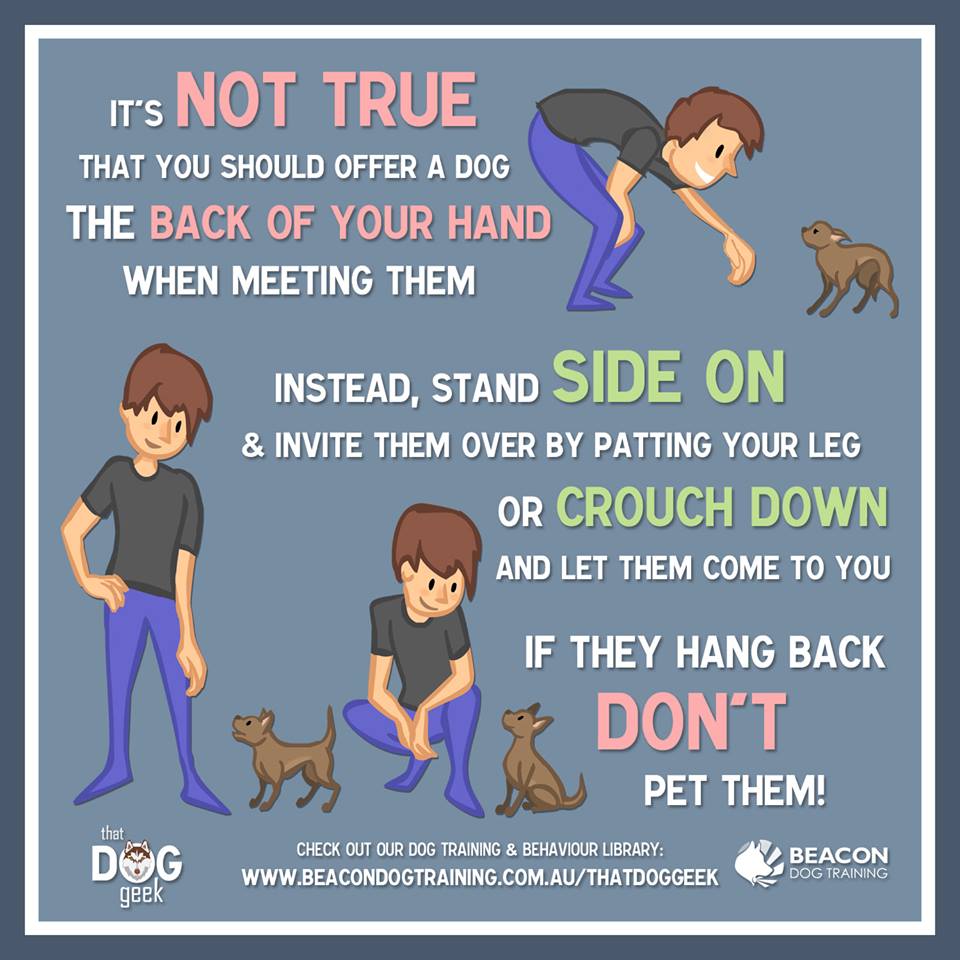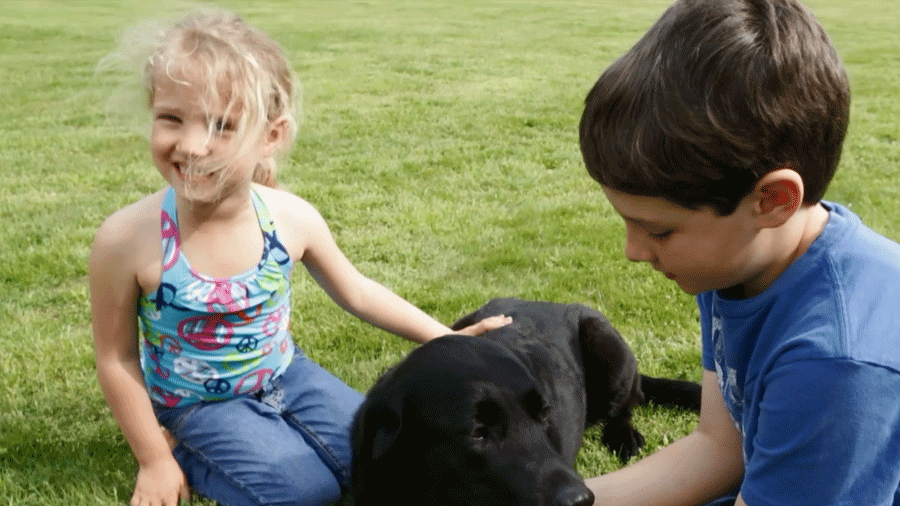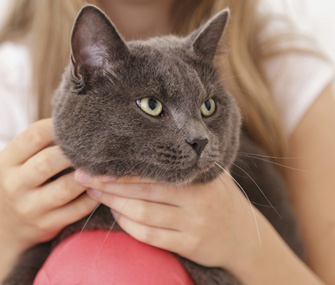
Whether you are a new dog owner or a seasoned one, it’s always helpful to remember some good general rules that you can practice to keep your dog and children safe. If you’ll have kids meeting your dog for the first time, it can be beneficial to go over some ground rules prior to the meeting. Making sure everyone is clear on the rules will help you safely enforce them. Remove your dog from a situation that is not safe.
- Never pull a dog’s ears or tail.
- Don’t grab on a dog’s feet.
- Avoid hugging dogs. This makes many dogs uncomfortable. If a dog feels threatened enough to bite, your head is dangerously close (the “bite zone”).
- Avoid putting your face close to a dog’s face. This may invade the dog’s personal space.
- Avoid running away from dogs. This may evoke a predatory response. Don’t forget, most dogs have some predatory instinct (some more than others).
- Avoid yelling or screaming around dogs. Excessive noise can scare or excite some dogs and may just annoy others.
Read on for more tips to create the best possible bond between your children and your pets.
10 Reasons Pets Are Good for Kids

Kids tend to think of all the good, fun benefits of having a pet. Parents who are experienced, or even first-time pet owners, know there is a lot of patience, time and effort involved but that the payoff of sharing your home and life is the unconditional love a well-cared-for pet gives. It’s well worth it.
For those parents sitting on the edge, here are several positive reasons you might not have thought of to bring a pet home for your kids:
- Children who grow up in homes with pets have less risk of developing common allergies and asthma.
- Playing with dogs may help lower blood pressure.
- Kids with pets get outside more—to go for walks, run and play—and enjoy all the associated health benefits.
- Pet owners require fewer doctor’s visits.
- Emerging readers often feel more comfortable reading aloud to a pet.
- Nurturing a pet is an acceptable way for boys to “parent play”—to practice being caregivers.
- Feeding and caring for a pet encourages childhood responsibility.
- Children with pets display improved impulse control, social skills and self-esteem.
- Sharing the love and care of a family pet forges an additional common bond among siblings.
- Cuddling a pet reduces stress, loneliness and anxiety.
Teach Kids and Cats to Interact Safely

You love your cat, and you love your child — and you want the two of them to be friends. But this may not happen naturally; it can require some work on your part. Start by teaching your child the right way to interact with your cat and by making sure that your cat feels safe and comfortable around your child.
Fortunately, there are a few simple strategies that can help foster a positive relationship between your cat and your child.
How to Get Everyone Playing Nicely
Supervise every interaction. Even well-meaning children can accidentally frighten a cat by pulling her tail, grabbing her paws or attempting to restrain her. You will need to be present for every interaction your child has with your cat. If he is acting in a manner that may frighten the feline, redirect his behavior to something more positive — and be sure to praise and reinforce proper treatment of the cat.
Teach your child the right way to pet the cat. Show your child how to use an open hand and a soft, gentle stroke when he pets the cat. Pay special attention to babies and toddlers who commonly poke and pat a cat or grab and hold her fur and skin. If needed, hold your baby or toddler’s hand to be sure he keeps an open palm while petting. Teach your child to pet the cat only on her back, shoulder, neck, and head; most cats will tolerate petting on these areas better than on the face, paws, tail or belly.
Pay attention to your cat’s body language. Help your child learn to recognize when your cat is relaxed and when she is not. A cat who is enjoying being petted will rub against your child’s hands or clothing or lean in toward him. She may also hold her tail high and twitch the end, and she may purr. Signs that petting should stop include a swishing tail, a tail that’s fluffed out, or a tail that’s lowered to the ground or tucked underneath the cat. An anxious cat may also move her ears back, growl or extend her claws.
Keep indoor play calm and gentle. Cats are sensitive to movement and noise. Normal play, such as shouting, jumping and running may upset and frighten your cat, even when your child is not playing with her. This type of play should be done outside or in a playroom where the cat is not allowed. When your child does play with your cat, teach him not to use his hands as a toy. Play with hands teaches a cat that it’s OK to use claws and teeth on hands. This can cause problems, including escalated predatory play that can frighten or inadvertently hurt a child. Teach your child to focus play on a toy rather than on his hands.
Allow your cat to hide. When your cat is hiding underneath something or up on something high, your child should never try to pull her out or try to squeeze in next to her. Your cat hides because she wants to be alone; cornering her or pulling her out can cause her to scratch or bite. Teach your child to allow the cat to come out on her own or to entice her out with nonstressful tactics, like luring her with a string toy or a row of treats.
Give your cat some alone time. Your cat should have ample areas in your home to have private time, such as cat trees, high shelving, and hiding spaces. Teach your child to leave the cat alone when she is in one of these private areas. It is also a good idea to have a room for your cat that is off-limits to your child; you can put her there when she needs a break or when you are unable to supervise her interactions with your child.
Dogs And Children

We have all heard the saying that “dog is man’s best friend”. Generally, this mantra rings true. Most of us can recall heartwarming stories or remember times spent with our favorite pets. Time and time again, dogs have become valuable members of our families, helping teach our children love, respect, responsibility, and gentleness. This bond between our families and four-legged pals last lifetimes and earns our pups a special place in our hearts.
This time-honored love between pooches and people can find many families looking to bring a dog into their homes or to visit with the neighbor’s dog. This process can be wonderful and exciting, but we should proceed with caution when introducing our children to new dogs. Unfortunately, for all the good, there are times when dogs bite or react in an unfriendly manner. Every day around 1,000 people seek emergency treatment for dog bite injuries. As parents, we need to do everything we can to prevent our children and beloved pets from ending up another statistic.
Thankfully, by teaching our sons and daughters the appropriate way to approach new dogs, handle pets, and remain calm around animals we can greatly reduce the chance something bad will happen. Listed below is a compilation of ideas to help introduce our children and dogs safely:
- Always ask permission before approaching a dog that doesn’t belong to you. Children need to learn that not all animals are friendly and cuddly. This simple gesture can prevent unsafe situations from developing.
- Teach children how to gently touch and pet animals. Children love animals, but they often don’t realize they are squeezing or pulling a dog’s coat. Far too often, children unintentionally hurt dogs which can result in bites or aggressive behaviors. Avoid these problems by showing the proper way to pet a dog.
- Have a child calmly approach the dog from the side and stop with enough room to allow the dog to willingly come to the child. This allows the animal to watch the child without feeling overwhelmed and greet the kid on his or her own terms.
- Experts recommend using a leash or commands to keep the dog under control at first. Have the dog “sit” and make introductions calmly. By using the leash, you will be able to regain control if things get a little wild.
- Avoid giving treats or using toys on the first greeting. Some dogs get excited at the sight of a treat and might snatch it roughly from tiny fingers. Also, toys are great ways to play with dogs, but it can cause territorial issues or rough housing that might not leave a great first impression on young ones.
- Before petting, let the dog sniff the child. Dogs use their sense of smell to say “hello” and find out who you are. Stand still, allowing the dog to sniff around you and the child. As an added caution, you should be careful about offering your hand to smell. Have a child curl in their fingers and avoid pushing it into the dog’s face. Let the animal come to you. If you are introducing a new baby to a dog, bring the little one’s blankets home to let the dog smell before the big introduction.
- Avoid wild movements or loud sounds. Many children initially want to hug and squeeze dogs, but they need to remain calm. Sudden body movements can easily frighten a pooch and cause them to protect themselves by biting or nipping.
- Don’t interrupt a dog that is eating or sleeping. Startling a dog is a sure fire way to cause an issue. Tell children to give them space and you can make introductions later.
- Watch the dog’s tails and body expressions. If you notice his tail is rigid, his ears are back, and the fur on his back is sticking up, then you shouldn’t approach. He is telling you he’s not sure if he is ready to greet you.
- Never leave a child and pet unattended. Even the nicest and most well-mannered dogs have been known to bite when their fur gets pulled, a leg gets bent the wrong way, a child sits on him, and more. To protect both the kid and the dog, it’s best to always be nearby and watching the two together.
